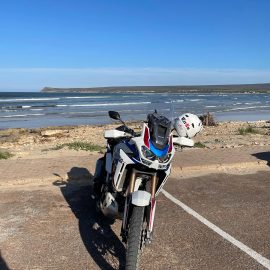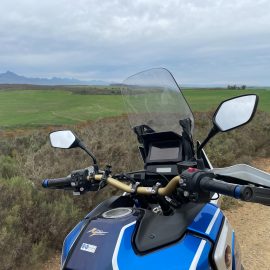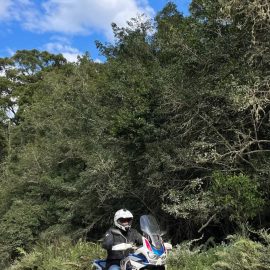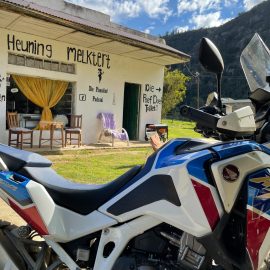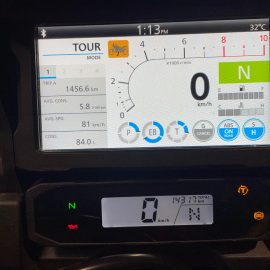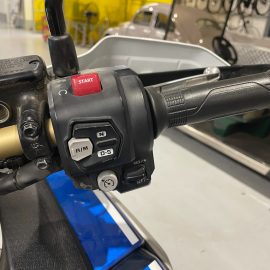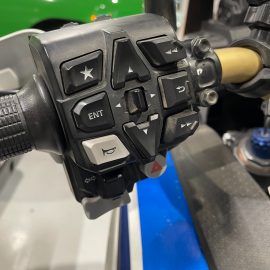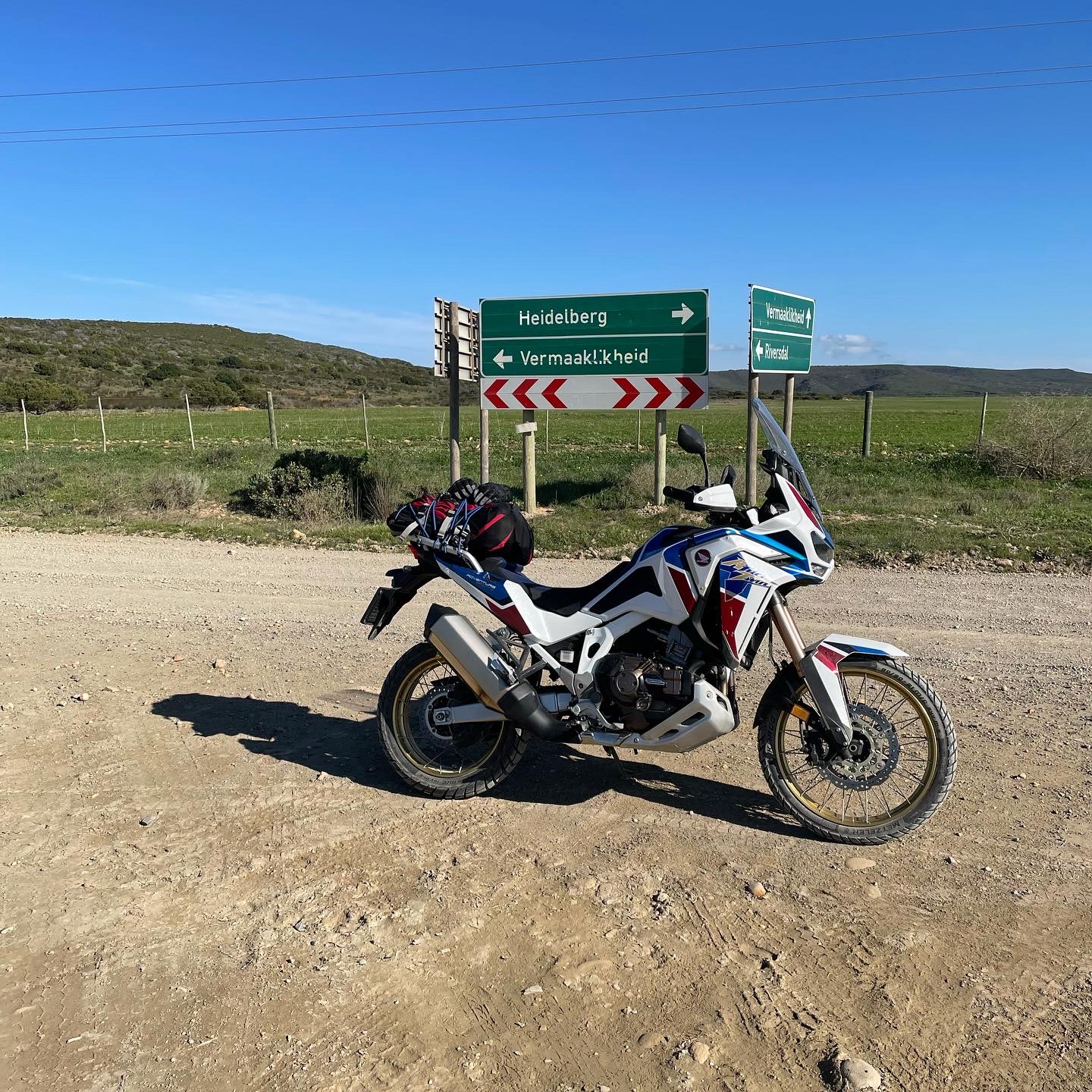
28 Jun On Yer Bike: Honda Africa Twin
This month FMM Curator Wayne Harley spends five days in the saddle of an Africa Twin…
As long as I can remember, the Honda Africa Twin XRV750 has been highly respected as a dual purpose touring motorcycle and was up there with the legendary GS BMW of the day, even taking the honours in the Dakar from 1986 till 1989. A machine built with the Dakar in mind, the early 750 cc model made 46 kW and 63 N.m of torque. Weighing in at only 198 kg, it was the styling and extra plastic that always made them look a bit bulky and ungainly, something we see all too often in modern adventure bike styling.
Since its inception, Honda has offered the Africa Twin in only four basic variants; from 1988 to 1989 the XRV650 was offered, followed by the XRV750 T from 1990 till 2003 – an impressive 13 year run. Then for some time the Africa Twin was not produced while Honda filled the gap with the Varadero – a motorcycle I once owned and wrote about in the June 2019 newsletter – and Transalp.
However, in 2016 Honda revived the model with the stunning, light and nimble looking CFR 1000 Africa Twin – no longer a throbbing V-twin, but a free-revving parallel twin pumping out 70 kW and 98 N.m of torque. It was as if Honda had been listening to consumer demand and made a more off-road specific adventure bike. It looked so capable, and I wanted a test ride but never had the opportunity until towards the end of June I was offered the all-new 2020/21 CFR 1100 with DCT transmission for a week-long road test experience. I knew this had to be a different test ride so I took a week off work and headed along the coast to Wilderness, my aim being to stay off as many main roads as possible to see if the Africa Twin was as good as others had claimed.
When Mike Cameron delivered the bike to me on the Friday before my trip, I was impressed at the scale of the CFR. It looks small in press photos and even when you see it on the road, but once you climb aboard it feels large, even bigger than the German parallel-twin counterpart. But, sadly, it also feels cheaper, maybe as a result of the 14 000 km on the odo put there by countless other test riders. But the loose panels, rickety manually-adjustable windscreen and the play in the throttle grip were so noticeably poor quality that I found myself wondering how durable this CFR would be if you took it off-road every weekend. This is not the Honda quality I’m used to…
On the up side, the motor is strong and pulls sweetly, thanks to Honda upping the capacity from 998 to 1 084cc. It’s still has a 270-degree crank with the 4-valves-per-cylinder uni-cam motor now producing 75 kW at 7 500 r/min with 105 N.m of torque This is more than enough to push the 248 kg bike plus rider around any mountain pass in Africa. However I did find the throttle-by-wire and DCT 6-speed transmission hard to master. At slow speeds it’s also unpredictable, and every so often on narrow tracks I over extended myself, having to brake hard and put down a foot to compose myself.
The DCT and auto cruise are great on the open road, and if you don’t set the cruising speed too high it does help with fuel efficiency. I found that I was achieving around 5,2 litres/100 km in auto cruise with touring mode selected. The different modes are easy to use and all have an effect on braking, traction and stability in different ways. Basically, there are 4 modes: Tour, Urban, Gravel and Off-road, which can be selected on the fly. There is also a custom mode that can be programmed and saved as a personal choice.
For riding on dirt roads and up and down some spectacular passes, I chose Off-road mode and Sport selected on the DCT. This shortened the gear changes and made the Honda nippy and responsive. It also limited the traction control and turned off the ABS, which allowed me to lock up the back wheel on very steep gravel descents as well as putting the power down 100% on dirt roads. With traction control active, everything just feels wrong. The bike moves differently with riding aids in place but I’m sure it’s all a lot safer and offers the best control. I may be just too old-school for this modern tech.
Stopping power is really on par with most modern motorcycles. This bike has a 310 mm dual-wave floating hydraulic disc with aluminium hub and radial fit 4-piston calipers and sintered metal pads on the front wheel. At the rear there is a 256 mm hydraulic disc with single piston caliper with sintered metal pads, and an ‘ABS off’ mode.
On tar roads, the Africa Twin is an outstanding touring machine. The riding position is comfortable as is the seat; also the windscreen, even if it is only manually adjustable and rattles in some positions, it does give good wind protection. The LCD Bluetooth Connectivity Meter with TFT 6,5-inch touch panel multi-information display is clear and easy to operate. The modes and settings are easy to navigate with operations mainly carried out with the left-hand side of the handlebar. Other features available on the Africa Twin are Daytime running lights, Bluetooth audio and Apple Carplay, USB socket, auto turn signal cancel, cruise control, emergency stop signal, IMU, HSTC and wheelie control. On the right-hand side of the handlebar is the throttle-by-wire, gear auto/manual or sport selection, neutral and cruise control.
Suspension is top notch. At the front end is a Showa 45 mm cartridge-type inverted telescopic fork with dial-style preload adjuster and damping adjustment, 230 mm stroke. At the rear is a monobloc aluminum swing arm with Pro-Link and a Showa gas-charged damper, hydraulic dial-style preload adjuster and rebound damping adjustments allowing 220 mm rear wheel travel. The ride is really good on all surfaces, and when moving and cruising the Africa Twin is an outstanding, well-balanced machine. It was only slow maneuvering on uneven ground with the DCT, and the unpredictable throttle that I didn’t enjoy.
In the five days I had the machine I covered 1 460 km, which included the Franschhoek Pass, Tradouw Pass, Garcia’s Pass, Montagu Pass and the spectacular Prince Albert”s Pass, all linked with many kilometres of dirt and tar roads. The Honda managed them all with an average speed of 81 km/h in both rain and shine. The Africa Twin is an outstanding machine. But I will definitely give the auto box DCT a skip for now – I’m still a manual guy!




